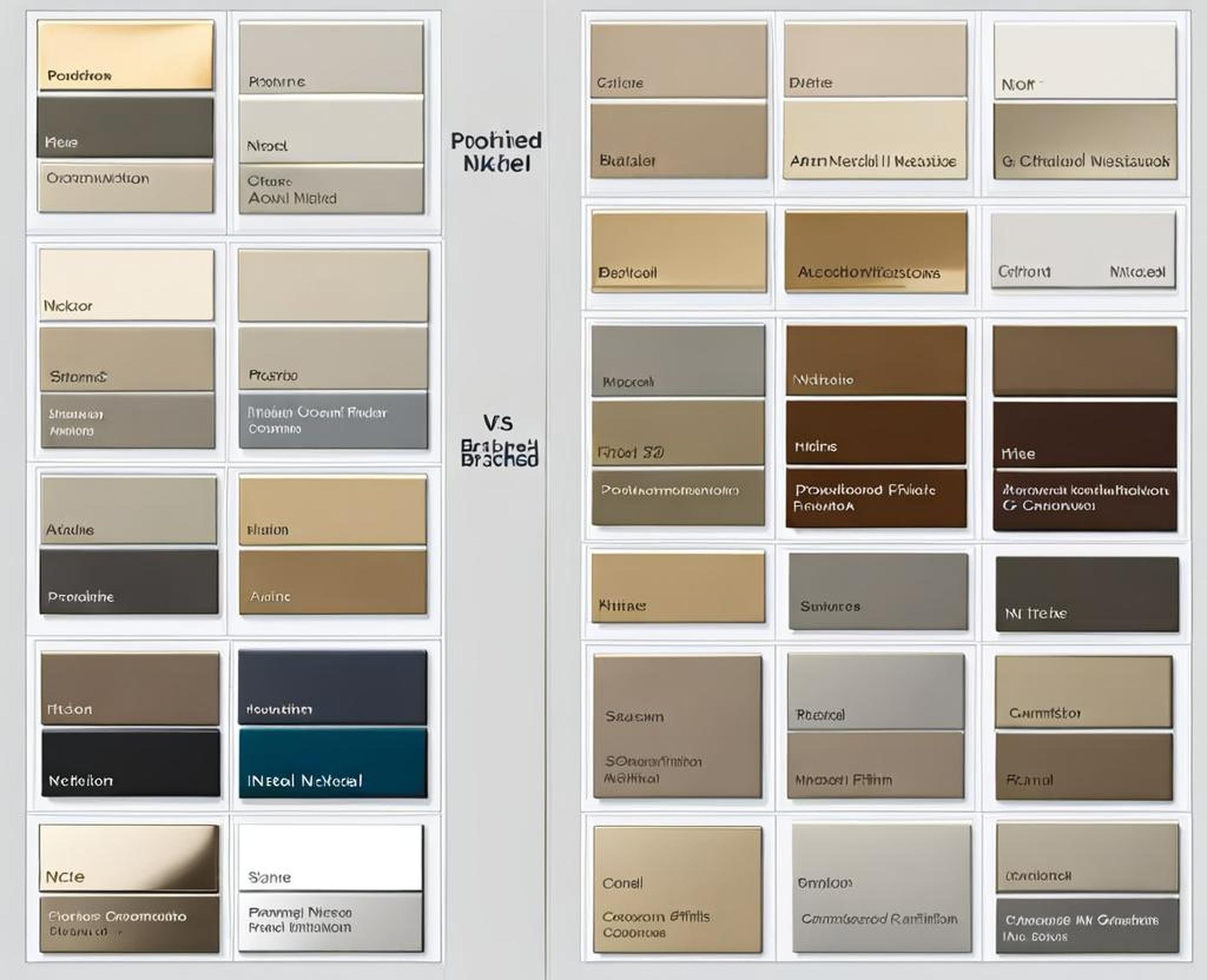Both polished and brushed nickel are popular for their metallic sheen. But they each have unique characteristics to consider before installing them throughout your bathrooms, kitchens or other living spaces.
Key Characteristics of Brushed Nickel Finishes
Brushed nickel fixtures have a distinctive matte appearance, with a lightly textured grain running across the surface. The brushing process used to create this soft, weathered look also makes brushed nickel incredibly durable and low maintenance.

Here are some of the most notable features of brushed nickel:
- Resistant to Scratches and Smudges – The textured finish hides fingerprints and water spots.
- Easy to Coordinate – Matching brushed metals like nickel, chrome and steel is achievable.
- Contemporary Styling – Brushed nickel suits modern, industrial and eclectic spaces.
Benefits of Choosing Polished Nickel
In contrast to the subtle matte finish of brushed nickel, polished nickel has an unmistakable shiny surface much like a mirror. It brings a richness and traditional elegance to kitchen and bathroom decor.
Here are some key advantages of polished nickel:
- Luxurious and Timeless Look – Polished nickel suits formal spaces.
- Warmer Tone Than Stainless Steel – More depth than a cold steel finish.
- Easy to Clean and Sanitize – Simple to just wipe down.
Comparing Durability and Maintenance
An important consideration for fixtures that see high traffic and usage is how well they hold up over time. Here’s how the two nickel finishes compare:
| Durability Factor | Brushed Nickel | Polished Nickel |
| Resistance to Scratches/Smudges | Highly Resistant | Susceptible to Damage |
| Exposure to Moisture and Humidity | Holds Up Well | Prone to Tarnishing |
| Ease of Cleaning | More Difficult | Simple Wipe Downs |
As shown, brushed nickel’s textured finish makes it the most scratch and stain-resistant surface. But polished nickel allows for easier cleaning and maintenance overall.
How Design Impacts Durability
An important note is that the durability of both brushed and polished nickel depends greatly on the quality of the product design and materials used. High-end fixtures made with thick, resilient metals will resist damage better regardless of finish.
Factors to Consider When Choosing Between Finishes
With an understanding of each finish’s unique merits, which is ultimately better comes down to:
- Personal Style – Do you prefer traditional or modern aesthetics?
- Placement in Home – Will the fixture be subject to high use?
- Environment – Is the space prone to humidity and moisture exposure?
- Budget – Polished nickel comes at a higher cost.
You’ll also want to decide if mixing metal finishes is an option or if you prefer one consistent look. While combining brushed and polished nickel risks looking disjointed, it can allow you to choose fixtures based solely on function.
Tips for Mixing Metal Finishes
If you do opt to mix brushed and polished nickel, these tips will help you achieve a holistic look:
- Use purposefully in separate spaces – e.g. polished nickel in main spaces, brushed nickel in utility areas.
- Incorporate both finishes in same color hardware like door knobs and light fixtures.
- Add unifying design details like black window frames or porcelain sinks.
The sheen and depth of polished nickel makes it a timeless choice that introduces refined, transitional style to your home. Meanwhile, the low-maintenance durability of industrial-edge brushed nickel makes it ideal for contemporary spaces and high-traffic areas.
Consider where fixtures will be used, your aesthetic leanings and budget constraints when deciding between the two. And remember – ultimately the choice comes down to your personal vision for the space.
